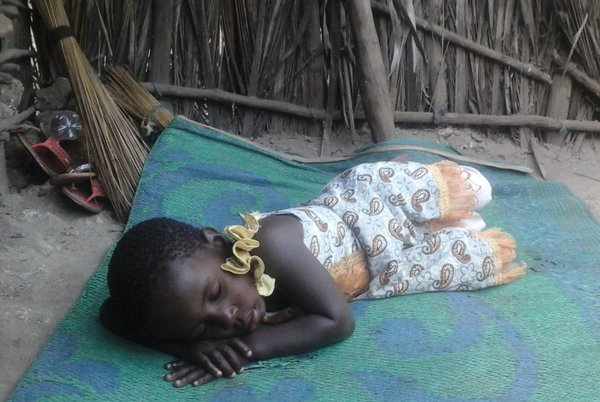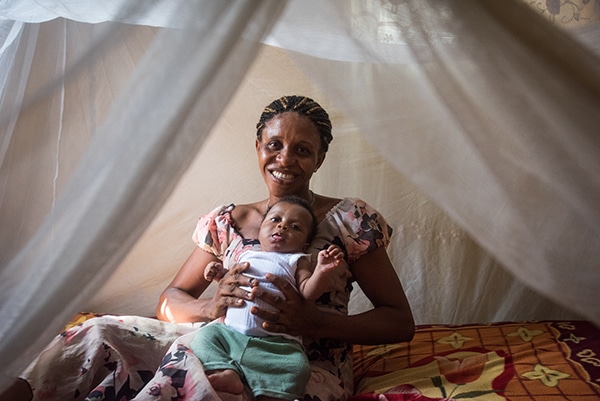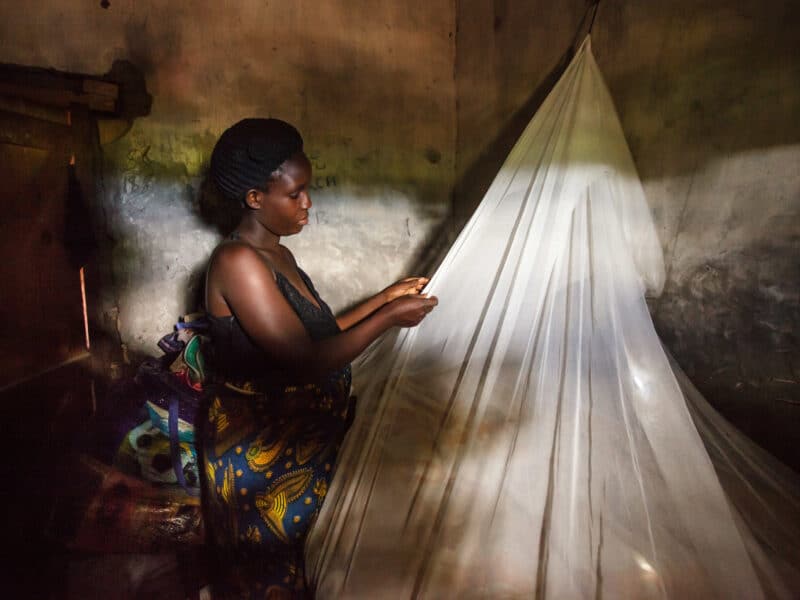The World Health Organization (WHO) credits the widespread use of insecticide-treated bed nets with playing a huge role in the reduction of the number of malaria cases in sub-Saharan Africa since 2001.
Despite the progress, there are still more than 200 million cases of malaria each year and nearly 500,000 people still die from it. And gains, for the first time in years, have leveled off.
A symposium led by the Johns Hopkins Center for Communication Programs’ VectorWorks project and the WHO aims to highlight the latest research and tools for those parts of the world where access to and use of treated bed nets is high but malaria cases persist. It will take place Thursday, November 1 at the American Society of Tropical Medicine & Hygiene’s annual meeting in New Orleans, La.
“If you really want to eliminate malaria, you have to look at what’s causing the remaining malaria cases once you have good prevention tools in place,” says symposium co-chair April Monroe, a senior program officer at VectorWorks, a five-year global malaria control project funded by the U.S. President’s Malaria Initiative. “To close the gap, we have to look at who is being exposed, where and when they are being exposed and what we can do to protect them.”
The event will feature research done in Zanzibar, Papua New Guinea, the Mekong, and Peru as well as a presentation by the University of California, San Francisco on novel malaria prevention tools available, or in the pipeline.
Khamis Haji, of the Zanzibar Malaria Elimination Program at the Ministry of Health, will present research done in partnership with CCP and Ifakara Health Institute in Tanzania, through the VectorWorks project.
The group looked at a combination of mosquito and human behavior to get a better understanding remaining malaria cases in Zanzibar, where access to and use of bed nets is high. They looked at when and where malaria mosquitoes are most likely to be biting and where people are at those times.
Conducting the research involved collecting mosquitoes, surveying households about their evening and nighttime behaviors, in-depth interviews with community leaders as well as nighttime observations of household members’ activities and sleeping patterns, and attending community events such as religious ceremonies where people gather at night.
While biting peaks in the late-night hours, malaria mosquitoes were found to bite from dusk until dawn. In the evenings, the researchers found, many people are outside. Children are playing. Women are cooking. Men are visiting with one another. Often people gather to watch television outside shops.
One female community member interviewed for the study explained the challenge of preventing mosquito bites during these times: “When you are outside you really can’t wear the bed nets, now can you?”
They also found that people who work outdoors at night are at risk as well as seasonal workers who travel from mainland Tanzania, where malaria transmission is higher, to Zanzibar during the farming season.
Based on their findings, the team found that while overall net access and use are high, there are some places and groups that can be targeted to receive more nets and increase use of existing nets. Expansion of community-level programs targeting travelers and seasonal workers should also be explored.
They also suggest that personal protection measures, such as insect repellents, could be used when people are going to be outside in the evenings and that tools such as spatial repellents, which are in development, could be deployed in the future to protect spaces inside and directly outside the home. Improvements, such as window screens and closed eaves, could also make a difference when people are inside their homes before sleeping hours.
These recommendations, Monroe says, were shared with the Zanzibar Malaria Elimination Advisory Committee and will help to inform the elimination strategy moving forward.
While the work was done in Zanzibar, which is comprised of islands where malaria transmission is quite low, Monroe says the concepts are applicable to areas where transmission remains stubbornly high, despite widespread access to and use of treated bed nets.
“While insecticide-treated nets remain a cornerstone of malaria prevention, we need to come together to determine what comes next in reducing malaria transmission,” Monroe says. “We need to keep pushing toward zero new cases, and that means ensuring the right combination of interventions for each context.”
In addition to tackling exposure that can happen outside of the protection of bed nets, the symposium will cover other potential contributors to persistent malaria transmission such as insecticide resistance and disease that goes untreated in the community.
Along with leading the symposium, VectorWorks researchers will present a dozen posters at the conference, from Oct. 26 through Nov. 1.





